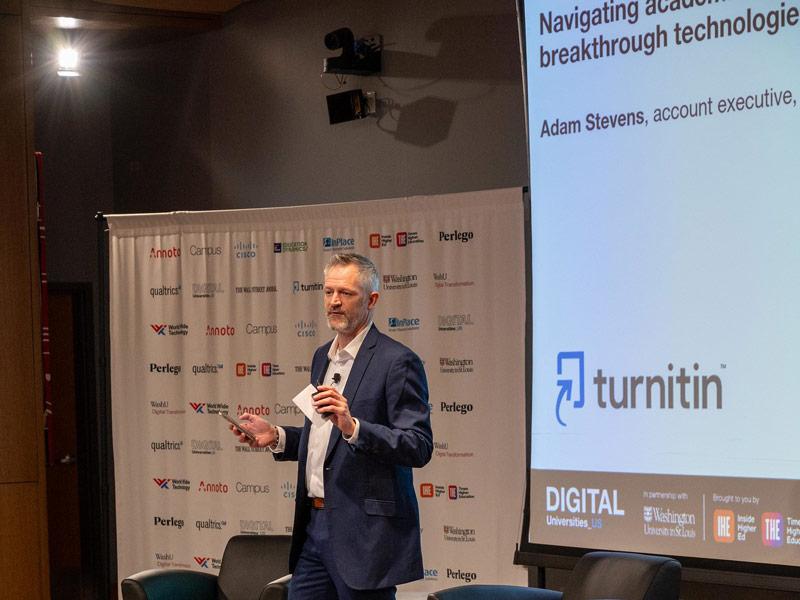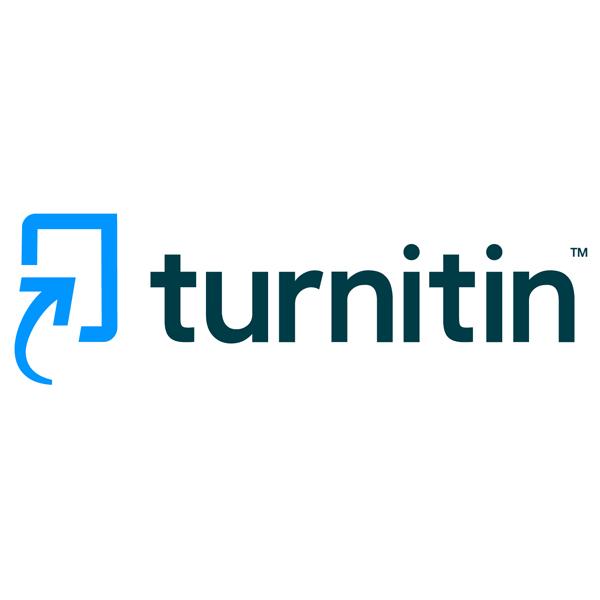
AI can transform learning experiences and provide at-home support

Adam Stevens, account executive at Turnitin, first realised the powerful learning applications of ChatGPT when using it to help his son with his maths homework.
Speaking at the 2024 THE Digital Universities US event, Stevens delivered a keynote address about navigating academic integrity and assessment in the age of breakthrough technologies. Initially, Stevens said, he was unsure about using ChatGPT to support his son’s learning but soon saw the benefit once the large language model explained the theory they were working on. “I looked at my son’s face and a light bulb went on. He said, ‘Oh, I remember’, then he finished his assignment,” Stevens said. “He not only had the answer, but he also understood how to get the answer.”
Using this example, Stevens asked how many of the educators in the audience had dreamed of sitting with their students while they were trying to complete an assignment, knowing that the next day the student wouldn’t ask for the help they needed, or that the tutor might not have the time to support them. “Now we’re in a world where maybe there’s a tool that can actually help tutor students in their homes with a little guidance, a little collaboration and a little critical thinking,” he said.
Educators are trying to navigate the new world of AI and retain academic integrity alongside progress and advancement, Stevens said. “We’re trying to balance transparency and also authenticity, not only on how the student is performing on their assignments and learning but also how we as educators are being open about the tools that are available and the best ways to use them,” he added.
Stevens believes that the integration of AI will lead to more productivity, higher-paying jobs, higher global GDP growth, new health discoveries and improvements in education.
But for educational developments to flourish, a shift is needed, Stevens said. Turnitin believes the conversation needs to change from how educators can detect that AI is being used to how they can enable it to be used in a way that maintains academic integrity and enhances the student’s ability to learn.
“We’re not just interested in giving you a tool that can detect when a student’s trying not to learn. We’re interested in giving you a tool that can help advance the way that we help students learn,” he said. “There might be a new way to learn that we haven’t come across before. There may be a future in which we ask the question, ‘Why aren’t our students using AI to help them do their work?’”
Based on results from more than two million papers graded since Turnitin launched its AI writing indicator, most students use AI minimally, Stevens said. “The majority of students may actually just want to learn and have a tool to explore. I think sometimes we forget that students go to universities because they’re interested in their education,” Stevens added.
To help educators and others at the institution engage with AI beyond simply detecting it, Turnitin has developed a free interactive resource called solving the AI writing puzzle. The resource acknowledges that institutions are dealing with the puzzle of navigating AI but that it can lead to advancements in technology, learning and equitable education.
The speaker:
- Adam Stevens, account executive, Turnitin
Find out more about Turnitin.

